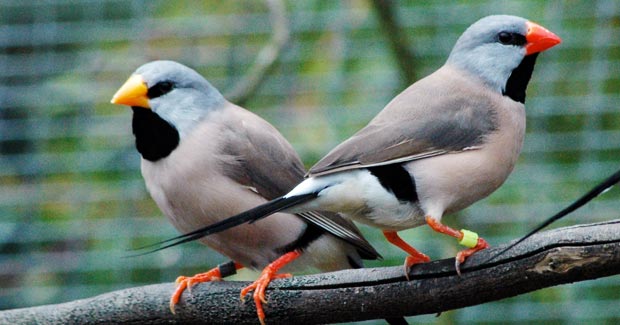Bright colours are avian matchmakers

IT ISN’T ONLY HUMANS that dress to impress – female birds select a mate based on an array of visual cues in males, some of which do not appear to have any genetic benefits.
It is a process that has long puzzled experts, however recent research suggests the evolutionary reason behind it may be genetic compatibility.
“A huge unanswered question in biology is why females of many species of animal choose mates based on ornamentation such as bright colours, long feathers, beautiful songs,” says Professor Geoffrey Hill, an ornithologist at Auburn University in the United States and leader of the research.
“I believe that for the first time, our idea explains why some ornaments function as signals of male quality while other ornaments seem to be arbitrary signals of attractiveness.”
Why do birds have bright colours?
Past theories cite elaborate feathers or colours in male birds as a means of advertising health or quality to potential mates (read more here: ‘The amazing colours of birds’).
However, Geoffrey argues that ornaments on birds, such as the colours found on the bill of the long-tailed finch (Poephila acuticauda), don’t necessarily denote “better-than-average” genes, rather they are signals of healthy energy-efficiency in a male’s DNA.
The finding, published recently in Proceedings of the Royal Society B, suggests that some ornaments may have evolved to indicate the efficiency of energy production in cells. This is controlled by a gene that affects the cell’s power source, the mitochondria.
If the male’s genes are compatible with a female’s mitochondrial DNA, the health of the offspring will be increased.
“We propose a new explanation, based on the need for females to find males with whom they will produce genetically compatible offspring,” Geoffrey explains.
“The imperative to find such mates leads to the evolution of signals of efficiency of energy production.”
Genetic compatibility in birds
Dr Simon Griffith, a behavioural ecologist from Macquarie University in Sydney, says the research is interesting and may help us understand how and why evolution favours particular ornaments for mate choice.
“We know that females choose partners on the basis of ornamental traits, and that those choices improve their reproductive success because of the qualities of different male partners,” says Simon.
“However there has always been a major question about why we see the same kind of colours and ornamental traits arising in unrelated groups of species.”
Simon agrees that ornaments like those found on the long-tailed finch are likely to relate to the production of energy in cells, adding that the research may change how some people think.
RELATED STORIES

